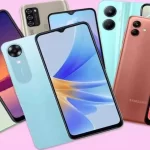Costing from as little as 1,099 the iPhone 11 Pro really is among a select few phones of a similar caliber that is affordable by today’s standards: so small by now that they are tiny by comparison to their competitors. This is all relative. To say the least, the iPhone looks quite puny compared to the other devices currently on the market. Its biggest selling point, however, is undoubtedly the use of apps. These are the heart and soul of the iPhone and form the basis of the device’s ability to do what it does best: letting you do all sorts of things with your phone. There are many apps available for iPhone, but most notable among them is the highly useful iCleaner.
In the light of this, let us look at some of the features found on iPhone 11 Pro. One notable difference between iPhones and Android phones is the extent of the software integration. For example, Android phones generally allow apps to run on the device by way of a generic framework, leaving the iPhone in a significantly better position when it comes to app functionality. The iPhone’s u1 chip, however, means that all software is developed using specific language and code, which leave it somewhat behind when compared to Android phones.
A smaller camera is probably one of the more noticeable differences between the two sets of phones, but it’s a necessary one and an important one to note. While there is no official word on whether the iPhone 11 will feature a camera built-in, we do know it won’t be part of the standard package. It would make for an interesting option, however, if the camera was part of a packaged add-on or expansion to the iPhone. That said, the absence of camera expansion means that iPhone 11 pro phones are somewhat limited in the selection of features they can boast.
Aside from the camera, one other thing we can expect to see with the iPhone 11 Pro comes in the form of Apple’s own Air Gesture. To put it simply, the Air Gesture system allows users to simply wave their hand over certain areas of the screen to activate it. This new feature, along with the larger display, is likely part of an effort to counter the success of the new HTC Evo Shift. The absence of physical buttons makes it much easier for users to use, and any improvements in functionality certainly help make up for that.
Probably one of the most widely-known differences between the two devices is the camera experience. While the iPhone has always had a good camera, the jump to a higher-end model like the iPhone 11 Pro makes it even better. With a larger camera lens, the iPhone 11 Pro offers up to two hundred more pixels of resolution than its predecessors, along with an eight megapixel optical zoom. This gives users plenty of options when taking photos, even when they want to turn the camera mode on the lower settings. The only downside to this is that even in good light the extra pixels will produce photos with an unclear, washed out look.
The battery life of the iPhone 11 Pro really is the best it can be. The a13 bionic is Apple’s answer to high-performance mobile processors, and it proves to be very effective at delivering on that promise. Between the speedy performance of the A7, as well as the long life of the A series, the power of these chips is definitely second to none. Users who are looking for the fastest chip will find that the A series performs nearly as well as the higher-end counterparts when it comes to raw speed, and a strong power delivery is just what Apple was looking for with the new iPhone.


 Social Media Algorithms – Decoding How They Shape Your Feed
Social Media Algorithms – Decoding How They Shape Your Feed  Review of the Top 10 Smartphones of 2024
Review of the Top 10 Smartphones of 2024  Social Media Trends – How Platforms Are Adapting to Changing User Behaviors
Social Media Trends – How Platforms Are Adapting to Changing User Behaviors  The Development of PC Hardware – From CPUs to GPUs
The Development of PC Hardware – From CPUs to GPUs  Can You Use WhatsApp on a Computer?
Can You Use WhatsApp on a Computer?  Data Privacy Regulations
Data Privacy Regulations  The Race for 5G – A Global Perspective
The Race for 5G – A Global Perspective  The Growing Importance of Cybersecurity in a Digital World
The Growing Importance of Cybersecurity in a Digital World  Cheap Internet Options
Cheap Internet Options 